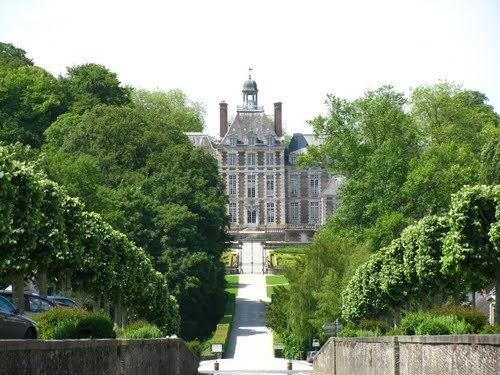Population (2010) 901 Local time Wednesday 2:07 AM | Region Normandy Area 4.23 km² | |
 | ||
Weather 6°C, Wind W at 24 km/h, 82% Humidity | ||
Balleroy ( French pronunciation ) is a former commune in the Calvados department in the Normandy region of north-western France. On 1 January 2016, it was merged into the new commune of Balleroy-sur-Drôme.
Contents
- Map of 14490 Balleroy France
- Geography
- History
- Administration
- Twinning
- Demography
- Civil heritage
- Religious heritage
- Activities and events
- Notable people linked to the commune
- References
Map of 14490 Balleroy, France
The inhabitants of the commune are known as Biardais or Biardaises and Billards or Billardes.
Geography
Balleroy is located some 16 km south-west of Bayeux and 21 km north-east of Saint-Lô. Access to the commune is by the D13 road from Cerisy-la-Forêt in the west which passes through the village and continues east to Lingèvres. The D28 road goes south from the village to Planquery. The commune is mainly farmland with the Château de Balleroy grounds just west of the village occupying a substantial land area.
The river Drôme forms the western and north-western borders of the commune as it flows north-east to eventually join the ocean at Port-en-Bessin-Huppain. The Ruisseau de la Commune flows from the west to join the Drome in the commune. The Vesbire forms the south-eastern border of the commune as it flows south-west to join the Drôme.
History
Until 1521 the commune was the property of the lord of Aunay. The lordship of Balleroy was purchased by the Trextot family. Jean de Choisy, counselor, notary and secretary of the king, in turn bought the lordship of Balleroy as well as the lands of Cormolain, Montfiquet, and Vaubadon. He was the son of Jean de Choisy, intendant of Metz, knight, advisor to the king and the Duke of Orléans, Lord of Balleroy, Beaumont, Grandcamp, Léthanville, and Saint-Pierre and he founded the present chateau. He made the inhabitants near the chateau into vassals, forcing them to build their homes there.
In 1634 the Lord of Balleroy obtained the establishment of a weekly market (on Tuesday) and two fairs a year.
During the French revolutionary period of the National Convention (1792-1795), the commune was called Bal-sur-Drôme.
Administration
Balleroy is part of the Community of communes Intercom Balleroy Le Molay-Littry which includes 22 communes and has its seat in Le Molay-Littry.
Balleroy was the seat of the former Canton of Balleroy. Since the 2015 French cantons reform, it is part of the canton of Trévières.
List of Successive Mayors
(Not all data is known)
Twinning
Balleroy has twinning associations with:
Demography
In 2010 the commune had 901 inhabitants. The evolution of the number of inhabitants is known from the population censuses conducted in the commune since 1793. From the 21st century, a census of communes with fewer than 10,000 inhabitants is held every five years, unlike larger communes that have a sample survey every year.
Sources : Ldh/EHESS/Cassini until 1962, INSEE database from 1968 (population without double counting and municipal population from 2006)
Civil heritage
The commune has two sites that are registered as historical monuments:
Religious heritage
Activities and events
Each year a gathering of hot air balloons took place at the Château de Balleroy. This gathering took place for the last time in 1999 when Malcolm Forbes, the chateau's owner, would have celebrated his 80th birthday.
Since 2007 in the face of demand from the public, the festival was again held at the end of June but this no longer happens in the castle. This was held by the village festival committee who organized a small gathering. The festivities are now held above the village at the stadium.
